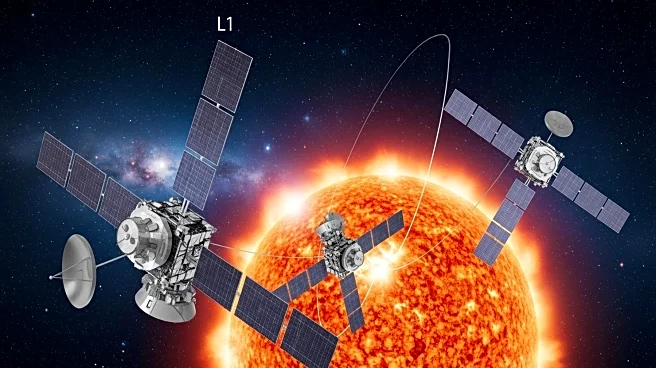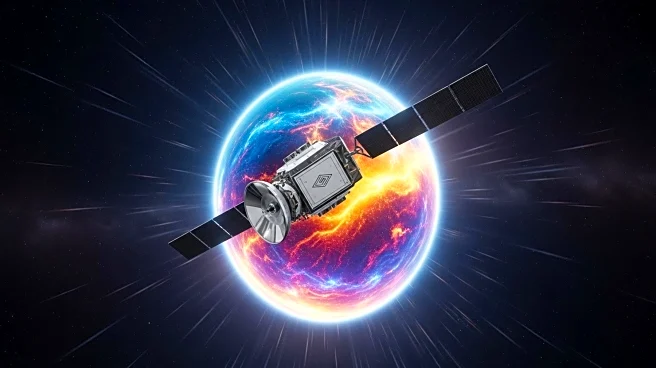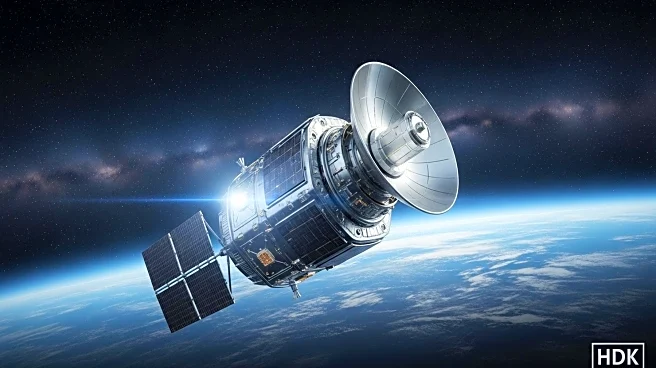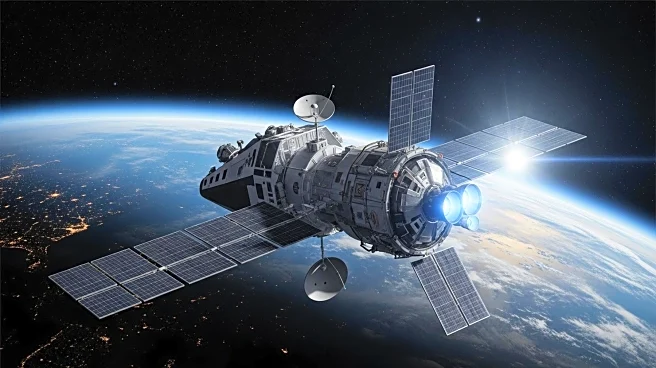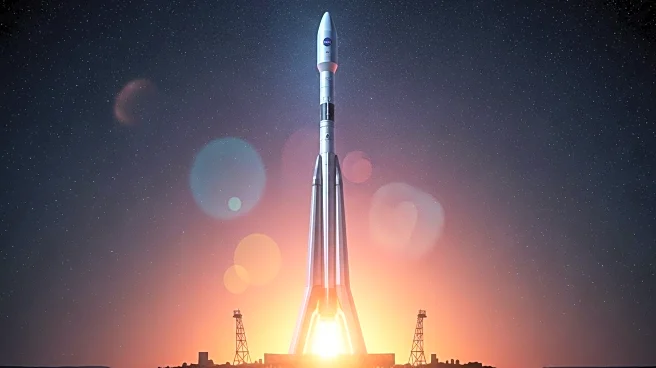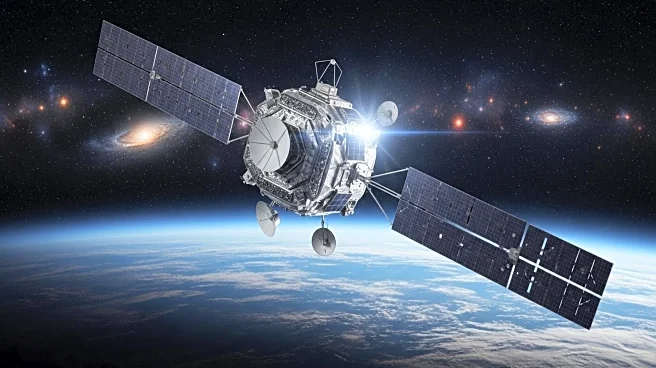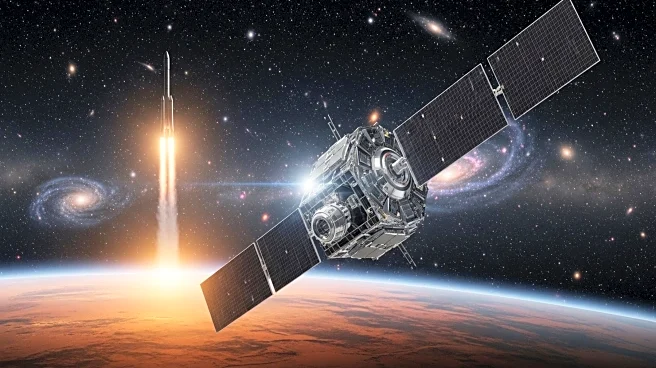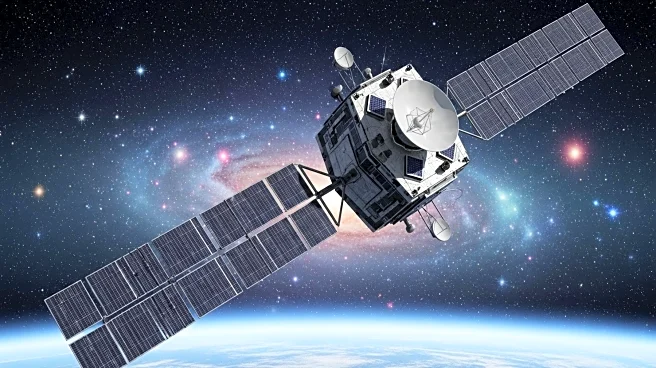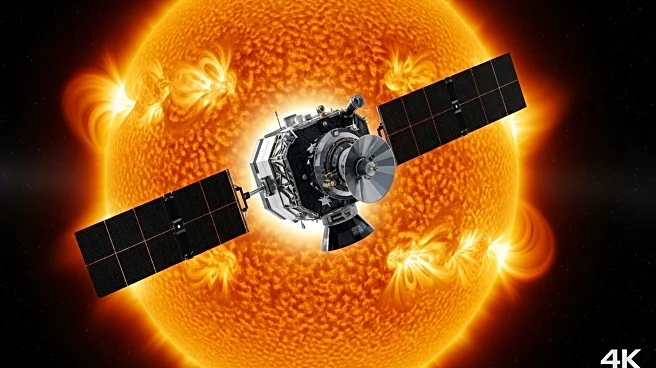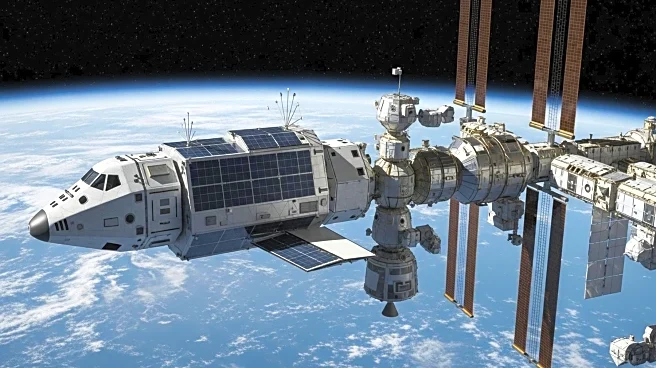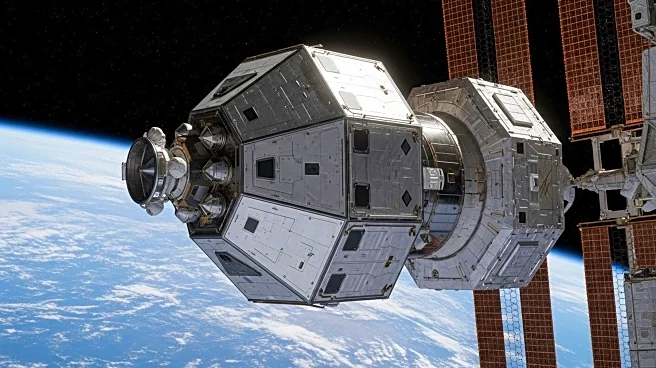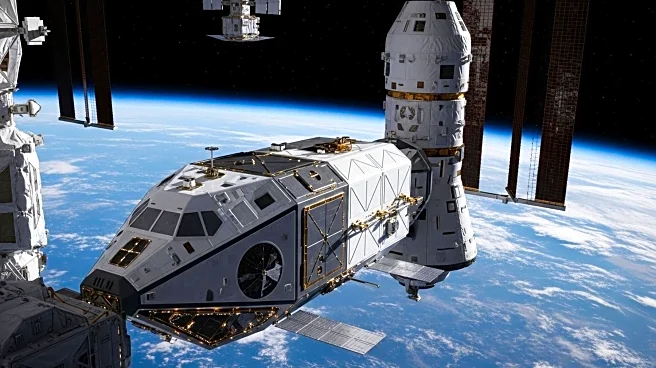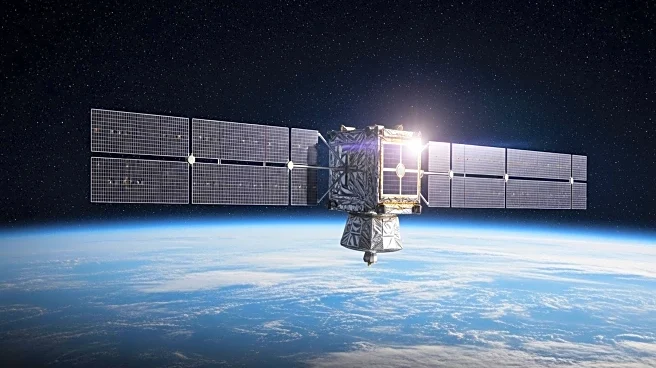What is the story about?
What's Happening?
NASA and NOAA are set to launch three spacecraft on a SpaceX Falcon 9 rocket from Kennedy Space Center on September 23, 2025. The mission includes NASA's IMAP probe, NOAA's SWFO-L1 satellite, and NASA's Carruthers Geocorona Observatory. These spacecraft will travel to the Earth-Sun L1 Lagrange point, approximately 1 million miles sunward, to provide continuous observation of the Sun. IMAP aims to map the heliosphere's boundary and study particle acceleration, while SWFO-L1 will monitor space weather, providing real-time data on solar flares and geomagnetic storms. The Carruthers Observatory will capture ultraviolet images of Earth's geocorona, enhancing understanding of Earth's atmospheric boundary.
Why It's Important?
This mission is crucial for advancing space weather prediction and understanding the Sun-Earth system. IMAP's high-resolution mapping of the heliosphere will improve knowledge of cosmic particle acceleration, aiding in the protection of astronauts from radiation storms. SWFO-L1's real-time monitoring will provide early warnings of solar storms, safeguarding satellites, power grids, and communications. The Carruthers Observatory will offer insights into Earth's atmospheric response to solar activity, contributing to space weather models and planetary science. As solar activity increases towards its 2025-2026 maximum, these missions will play a vital role in mitigating space weather impacts.
What's Next?
Following the launch, the spacecraft will cruise to L1, arriving around January 2026. They will undergo testing before beginning primary science operations by March 2026. The data collected will enhance space weather forecasting and contribute to future missions, including NASA's Artemis program. The collaboration between NASA and NOAA, along with international partners, underscores the global effort to improve space weather resilience and scientific understanding of the Sun-Earth connection.
Beyond the Headlines
The mission highlights the importance of inter-agency and international collaboration in space exploration. The integration of NOAA's operational satellite with NASA's science missions reflects the intertwined nature of scientific research and practical applications in heliophysics. The data from these missions will inform future initiatives, such as NASA's Heliophysics Big Year and potential interstellar probes, advancing our understanding of the solar system's protective boundaries and their implications for planetary habitability.
AI Generated Content
Do you find this article useful?
